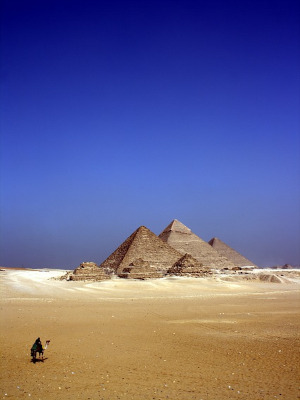Thanks to new technologies, we know nowadays a lot about the life in ancient Egypt and about the progressiveness that they had. They were very far ahead in matters of physical hygiene, and their educational system was way more advanced compared to other empires.
The empire, which is nowadays known as Ancient Egypt, started blooming from around 3000 BC until 395 AD. It developed into a progressive country with a sophisticated writing system, agricultural work, and its own calendar. Ancient Egypt is located in today’s Egypt, where to this day the people are proud of their country’s history and early high culture. Since the Nile is the longest river in Africa, it was one of the most important spots for them and their main source of life. That is also why most people lived a short distance from the Nile. In 3000 BC, King Mena united Ancient Egypt into one empire because, until then, the country was split into Lower Egypt and Upper Egypt. Lower Egypt was the small section at the lower end of the Nile, and Upper Egypt, the much larger part, was upstream and was also called the land of the reeds.
Furthermore, the Nile was really important in agriculture because whenever it rained, the river got flooded, brought water to the normally dry land, and served as fertiliser. This fertile area around the Nile was fought over many times because of its value.
Society in Ancient Egypt
The socially highest positions in ancient Egypt were the kings and pahraohs, who sometimes got worshipped like gods. Every citizen of the country was inferior to them and had to show obedience. They were at the social top, and the rest of society’s ranking was dependent on their occupation. So, the Pharaohs were known as the children of the gods and were only sent on Earth in order to function as a medium between the people and the gods in order to ensure their welfare. The second-most powerful were the vizier and the high priest. The most important duty of the vizier was to consult and advise the pharaoh in financial matters. The high priest functioned as a substitute for the pharaoh in all religious affairs.
On the 3rd level, there were priests and officials because of religious reasons and also because officials could read and write the complicated hieroglyphs. Then, in the 4th grade, there were craftsmen and farmers. They did not gain a lot of recognition, even though they were of great importance for the country.
At the lowest social level, there were the slaves. Their lives only consisted of work since they were claimed as “possessions” of the Pharaoh. Most of the time, they were prisoners of war, but Egyptians could also become slaves if they committed crimes or had debts.
Writing system: “Hieroglyphics”
In school, children learned how to read and write hieroglyphs. Hieroglyphs look like small pictures that are symbolic of not only single letters but also entire words. They were not only used to write but also to count food stocks in order to see how much they needed to save for the drought period. Other than that, the children also learned about mathematics, administration, and even medicine.
Pyramids as architectonic masterpieces
Pyramids in Egypt are famous all over the world, and the three big pyramids (Cheops-pyramid, Chephren-pyramid, and Mykerinos-pyramid) belong to the seven wonders of the ancient world. Research scientists make from time to time impressive discoveries that tell us more about the history of the Egyptian culture of the past. Until this day, it is uncertain how exactly the pyramids were built, but one thing all researchers agree about is that the Egyptians must have had broad knowledge about mathematics and the construction of buildings. Because of the impressive pyramids, every stone sat in the right spot.
Mummies
However, the pyramids were not built to look impressive from the outside. Their most important purpose is that they are tombs for pharaohs that were often filled with treasures and valuable items. The enbalmed and wrapped-in-cloth body of the pharaoh is called the mummy. A few mummies are well preserved and gave historians great insights into the way Egyptians dealt with diseases and injuries. Furthermore, the Egyptians wanted to preserve their bodies because they believed in the afterlife—a life after death on Earth.

Sources:
https://studyflix.de/geschichte/altes-aegypten-6608
https://www.planet-wissen.de/geschichte/antike/pyramidenbau/pyramidenbau-antike-weltwunder-100.html#:~:text=Die%20Pyramiden%20von%20Gizeh%20(heutiges%20%C3%84gypten)&text=Die%20Pyramiden%20sind%20das%20einzige,Pyramide%20und%20die%20Mykerinos%2DPyramide.
